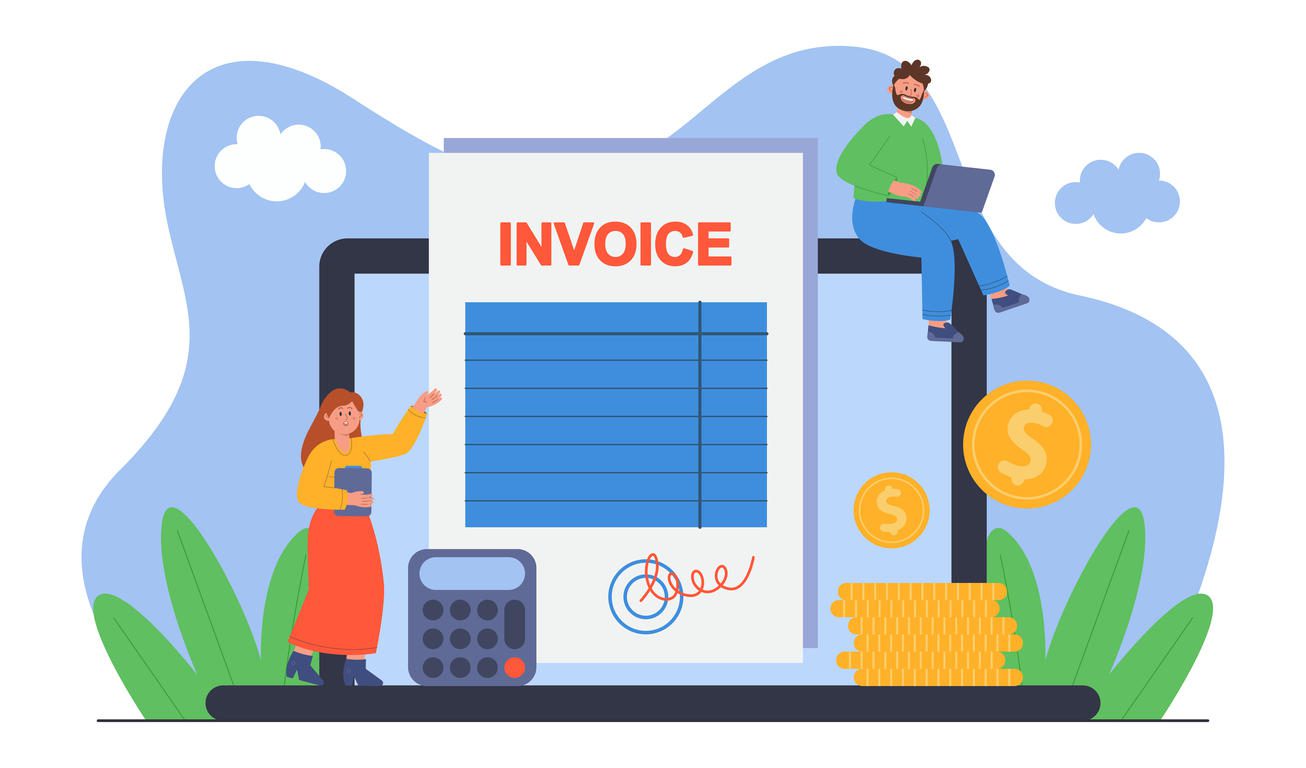
The business landscape in Saudi Arabia is undergoing a significant transformation as the country moves towards greater digitalization and streamlined tax processes. At the forefront of this change is the introduction of electronic invoicing, or eInvoicing, which has become a critical component of the Kingdom’s vision for a more efficient and transparent economy. For businesses operating in Saudi Arabia, adapting to these new regulations is not just a matter of compliance, but an opportunity to enhance their operations and stay competitive in an evolving market.
The Zakat, Tax and Customs Authority (ZATCA) of Saudi Arabia has mandated the implementation of eInvoicing as part of its broader initiative to modernize the tax system and combat tax evasion. This move aligns with global trends towards digital tax administration and reflects Saudi Arabia’s commitment to creating a business-friendly environment that attracts foreign investment while ensuring proper tax collection.
For many companies, particularly those already using enterprise resource planning (ERP) systems like NetSuite, the transition to eInvoicing presents both challenges and opportunities. NetSuite, known for its robust cloud-based business management solutions, offers a platform that can be adapted to meet the specific requirements of Saudi Arabia’s eInvoicing mandate. However, the implementation process requires careful planning and execution to ensure full compliance with ZATCA regulations.
Understanding Saudi Arabia’s eInvoicing Mandate
The eInvoicing system in Saudi Arabia, also known as “Fatoorah,” is designed to digitize the invoicing process for all taxable supplies of goods and services. This system aims to improve the accuracy of invoice issuance and recording, reduce the shadow economy, and increase tax compliance. The mandate applies to all taxpayers subject to VAT in Saudi Arabia, including residents and non-residents with a taxable presence in the Kingdom.
ZATCA has outlined a phased approach for the implementation of eInvoicing:
Phase 1: Generation and storage of tax invoices and notes in a structured electronic format.
Phase 2: Integration of eInvoicing systems with ZATCA’s systems for real-time reporting and clearance of invoices.
Each phase comes with its own set of technical and functional specifications that businesses must adhere to. These include requirements for the format of electronic invoices, the inclusion of specific data fields, and the use of digital signatures to ensure the authenticity and integrity of the invoices.
The first phase of the mandate focused on ensuring that businesses could generate and store electronic invoices internally. This phase was crucial in allowing companies to adapt their systems and processes to the new digital format. The second phase, which is more complex, requires businesses to integrate their eInvoicing systems directly with ZATCA’s platform for real-time reporting and validation of invoices.
One of the key aspects of the Saudi eInvoicing system is its emphasis on standardization. ZATCA has specified a standard format for electronic invoices, which includes mandatory fields such as the seller’s and buyer’s details, invoice number, date of issue, description of goods or services, taxable amount, and VAT amount. This standardization is crucial for ensuring consistency across all businesses and facilitating easier auditing and compliance checks by the tax authorities.
Another important feature of the Saudi eInvoicing mandate is the requirement for invoices to be issued in both Arabic and English. This bilingual approach reflects the international nature of business in Saudi Arabia and ensures that invoices are accessible to both local and foreign entities operating in the Kingdom.
The Role of NetSuite in eInvoicing Compliance
For businesses using NetSuite as their ERP system, the platform’s flexibility and extensibility provide a solid foundation for implementing eInvoicing solutions that meet ZATCA’s requirements. NetSuite’s core functionalities, including its robust financial management and reporting capabilities, can be leveraged to support the generation, storage, and transmission of electronic invoices in compliance with Saudi regulations.
Key features of NetSuite that support eInvoicing compliance include:
- Customizable Invoice Templates: NetSuite allows for the creation of custom invoice templates that can include all the mandatory fields required by ZATCA, such as the seller’s and buyer’s VAT numbers, invoice issue date and time, and detailed line items with tax calculations. This flexibility is crucial for adapting to the specific format requirements of Saudi eInvoicing.
- Multi-Currency and Multi-Language Support: Essential for businesses operating in Saudi Arabia, NetSuite can handle transactions in multiple currencies and languages, ensuring that invoices can be generated in both Arabic and English as required by ZATCA. This feature is particularly valuable for international companies with operations in the Kingdom.
- Automated Tax Calculations: NetSuite’s tax engine can be configured to automatically apply the correct VAT rates and calculate taxes in accordance with Saudi tax laws, reducing the risk of errors in tax reporting. This automation is essential for handling the complex VAT scenarios that can arise in various business transactions.
- Digital Signature Integration: While not native to NetSuite, the platform can be integrated with third-party digital signature solutions to meet ZATCA’s requirements for invoice authentication. This integration ensures that each invoice is securely signed and tamper-proof, meeting the stringent security standards set by ZATCA.
- Real-Time Reporting Capabilities: NetSuite’s reporting tools can be customized to generate the necessary reports for VAT compliance and prepare data for transmission to ZATCA’s systems. This real-time reporting functionality is crucial for meeting the phase 2 requirements of the eInvoicing mandate.
- Scalable Cloud Architecture: NetSuite’s cloud-based infrastructure allows businesses to easily scale their eInvoicing operations as transaction volumes grow, without the need for significant hardware investments.
- Workflow Automation: NetSuite’s workflow capabilities can be leveraged to create automated processes for invoice approval, validation, and submission, streamlining the entire eInvoicing lifecycle.
- Audit Trail and Data Security: NetSuite provides robust audit trail functionality and data security measures, which are essential for maintaining the integrity of eInvoicing data and meeting ZATCA’s requirements for data retention and security.
Implementing eInvoicing with NetSuite: A Step-by-Step Approach
While NetSuite provides a strong foundation for eInvoicing compliance, the implementation process requires careful planning and execution. Here’s a step-by-step approach to implementing eInvoicing with NetSuite in Saudi Arabia:
- Assessment and Gap Analysis
The first step is to conduct a thorough assessment of your current invoicing processes and NetSuite configuration. Identify gaps between your existing setup and ZATCA’s requirements. This analysis should cover aspects such as invoice content, format, storage, and transmission capabilities.
During this phase, it’s important to:
– Review all types of transactions that generate invoices in your business
– Analyze the current data fields captured in NetSuite and compare them with ZATCA’s requirements
– Assess the volume of invoices generated and the impact on system performance
– Evaluate the readiness of your IT infrastructure to support real-time invoice transmission - NetSuite Customization
Based on the gap analysis, customize your NetSuite instance to accommodate the specific requirements of Saudi eInvoicing. This may involve:
– Modifying invoice templates to include all required fields
– Configuring tax codes and rates to ensure accurate VAT calculations
– Setting up custom fields to capture additional data required by ZATCA
– Creating scripts or workflows to automate the generation and storage of electronic invoices
– Developing custom reports to meet ZATCA’s reporting requirements
It’s crucial to work closely with NetSuite experts or certified partners who have experience with Saudi tax regulations to ensure that all customizations are compliant and optimized for performance. - Integration with ZATCA’s Systems
Develop or acquire integration solutions that allow NetSuite to communicate with ZATCA’s platforms for real-time invoice reporting and clearance. This may involve working with NetSuite partners or developers who specialize in Saudi tax compliance solutions.
Key considerations for this integration include:
– Ensuring secure and reliable data transmission
– Implementing error handling and retry mechanisms
– Developing a process for handling invoice rejections or validation errors
– Creating a dashboard for monitoring the status of invoice submissions - Digital Signature Implementation
Implement a digital signature solution that integrates with NetSuite to meet ZATCA’s requirements for invoice authentication. This typically involves working with a certified provider of digital certificates in Saudi Arabia.
The digital signature implementation should:
– Seamlessly integrate with the invoice generation process in NetSuite
– Support bulk signing of invoices for high-volume transactions
– Provide a clear audit trail of signed documents
– Comply with ZATCA’s specific requirements for cryptographic standards - Testing and Validation
Conduct thorough testing of the eInvoicing solution to ensure that invoices generated through NetSuite meet all technical and functional specifications set by ZATCA. This should include testing of various scenarios, such as different types of transactions, corrections, and cancellations.
The testing phase should cover:
– Generation of invoices for various business scenarios
– Validation of invoice format and content against ZATCA’s specifications
– Performance testing to ensure the system can handle peak transaction volumes
– Integration testing with ZATCA’s test environment
– User acceptance testing to verify that the solution meets business requirements - Staff Training and Process Updates
Provide comprehensive training to staff on the new eInvoicing processes and any changes to NetSuite workflows. Update internal procedures and documentation to reflect the new eInvoicing requirements.
Training should cover:
– Overview of the Saudi eInvoicing mandate and its implications
– Changes to invoice generation and approval processes
– Use of new fields or functions in NetSuite
– Handling of exceptions and error resolution
– Best practices for ensuring compliance - Go-Live and Monitoring
Once testing is complete and staff are trained, implement the eInvoicing solution in a phased approach, starting with a pilot group before rolling out to the entire organization. Establish monitoring processes to ensure ongoing compliance and to quickly address any issues that arise.
Post-implementation activities should include:
– Close monitoring of invoice generation and transmission during the initial go-live period
– Regular audits of generated invoices to ensure continued compliance
– Performance monitoring to identify and address any system bottlenecks
– Staying informed about updates to ZATCA regulations and adjusting the system as needed
Get in Touch
We know what NetSuite can do and how it can help you. Schedule your free NetSuite assessment today
Challenges and Considerations
Implementing eInvoicing with NetSuite in Saudi Arabia comes with several challenges that businesses should be prepared to address:
- Regulatory Compliance: Keeping up with evolving ZATCA regulations and ensuring that the NetSuite implementation remains compliant over time. This requires ongoing vigilance and a commitment to staying informed about regulatory changes.
- Data Security and Privacy: Implementing robust security measures to protect sensitive invoice data, especially when transmitting information to ZATCA’s systems. This includes ensuring encryption of data in transit and at rest, as well as implementing strict access controls.
- System Performance: Ensuring that the addition of eInvoicing functionality does not negatively impact NetSuite’s performance, particularly for businesses with high transaction volumes. This may require optimizing database queries, implementing caching mechanisms, or upgrading hardware resources.
- Arabic Language Support: Configuring NetSuite to handle Arabic text and ensuring that invoices can be generated in both Arabic and English as required. This includes addressing right-to-left text formatting and ensuring proper character encoding.
- Integration Complexities: Managing the integration between NetSuite, digital signature solutions, and ZATCA’s platforms, which may require ongoing maintenance and updates. This includes handling API changes, managing authentication tokens, and ensuring seamless data flow between systems.
- Cost Considerations: Budgeting for the initial implementation costs as well as ongoing expenses related to compliance and system maintenance. This includes costs for NetSuite customization, integration development, digital certificate subscriptions, and potentially increased cloud resource usage.
- Change Management: Overcoming resistance to change from staff who may be accustomed to traditional invoicing processes. This requires clear communication of the benefits of eInvoicing and comprehensive training programs.
- Data Migration: For businesses transitioning from legacy systems, migrating historical invoice data to the new eInvoicing format can be a complex and time-consuming process.
- Vendor and Customer Readiness: Ensuring that your business partners, especially smaller vendors or customers, are prepared to receive and process electronic invoices. This may involve providing support or guidance to your business ecosystem.
- Continuous Compliance: Implementing processes for regular audits and reviews to ensure ongoing compliance with ZATCA regulations, which may evolve over time.
Benefits of eInvoicing Implementation
While compliance with ZATCA regulations is the primary driver for implementing eInvoicing, businesses can realize several benefits from this digital transformation:
- Improved Efficiency: Automation of invoice generation and processing reduces manual errors and speeds up the invoicing cycle. This can lead to faster payment times and improved cash flow management.
- Cost Savings: Reduction in paper usage, printing, and storage costs associated with traditional invoicing methods. Electronic invoicing also reduces the need for physical document handling and storage space.
- Enhanced Cash Flow Management: Faster invoice processing and payment reconciliation can lead to improved cash flow. Real-time visibility into invoice status allows for better financial forecasting and decision-making.
- Better Data Analytics: Digital invoices provide richer data for business intelligence and financial analysis. This data can be used to identify trends, optimize pricing strategies, and improve customer relationships.
- Increased Transparency: Real-time reporting capabilities improve visibility into financial transactions for both businesses and tax authorities. This transparency can help build trust with regulatory bodies and streamline tax audits.
- Simplified Audits: Electronic storage of invoices and automated reporting simplify the audit process and reduce the time and resources required for tax compliance. This can result in significant cost savings and reduced stress during audit periods.
- Environmental Impact: By reducing paper usage, eInvoicing contributes to environmental sustainability efforts, which can enhance a company’s corporate social responsibility profile.
- Improved Customer Experience: Electronic invoices can be delivered instantly, reducing delays in the billing process and providing customers with a more modern, efficient experience.
- Fraud Prevention: Digital signatures and encrypted transmission of invoices help prevent fraud and unauthorized alterations, providing greater security for both businesses and their customers.
- Competitive Advantage: Early adopters of eInvoicing may gain a competitive edge by demonstrating compliance readiness and operational efficiency to potential clients and partners.
Future-Proofing Your Business
As Saudi Arabia continues to advance its digital agenda, businesses that proactively embrace technologies like eInvoicing are better positioned for future success. The implementation of eInvoicing with NetSuite not only ensures compliance with current regulations but also prepares businesses for future enhancements to the tax system.
Looking ahead, we can expect further developments in areas such as:
– Integration of eInvoicing with other digital government services, creating a more interconnected business ecosystem
– Enhanced data analytics capabilities for tax authorities, potentially leading to more sophisticated audit processes
– Potential expansion of real-time reporting requirements to other tax types, such as customs duties or excise taxes
– Introduction of blockchain technology for invoice verification and tax collection, further enhancing security and transparency
– Adoption of artificial intelligence and machine learning for automated compliance checks and fraud detection
– Harmonization of eInvoicing standards across the Gulf Cooperation Council (GCC) countries, facilitating smoother cross-border transactions
By establishing a robust eInvoicing foundation with NetSuite, businesses in Saudi Arabia can adapt more quickly to these future changes and maintain their competitive edge in an increasingly digital economy. The scalability and flexibility of the NetSuite platform will be crucial in accommodating these evolving requirements without the need for major system overhauls.
Moreover, the data gathered through eInvoicing can serve as a valuable asset for businesses, providing insights that can drive strategic decision-making and operational improvements. As data analytics capabilities continue to advance, companies with well-implemented eInvoicing systems will be better positioned to leverage this information for business growth and optimization.
Conclusion
The implementation of eInvoicing in Saudi Arabia represents a significant step towards modernizing the country’s tax system and business environment. For companies using NetSuite, this transition offers an opportunity to leverage their existing ERP investment to achieve compliance while also realizing operational benefits.
Successfully implementing eInvoicing with NetSuite requires a thorough understanding of ZATCA’s requirements, careful planning, and expert execution. By following a structured approach and addressing key challenges, businesses can not only meet their compliance obligations but also position themselves for greater efficiency and growth in the Saudi market.
As the deadline for full compliance approaches, it’s crucial for businesses to act swiftly in assessing their readiness and initiating their eInvoicing implementation projects. This proactive approach will not only ensure compliance but also allow companies to capitalize on the benefits of digital transformation ahead of their competitors.
The journey to eInvoicing compliance may be complex, but with NetSuite as a foundation and a well-executed implementation strategy, businesses in Saudi Arabia can confidently navigate this new era of digital tax administration. The initial investment in time and resources will pay dividends in the form of streamlined operations, improved financial visibility, and enhanced compliance posture.
In an era where regulatory compliance and technological advancement go hand in hand, embracing eInvoicing is not just about meeting government mandates—it’s about future-proofing your business and staying ahead in a rapidly evolving digital landscape. By leveraging the power of NetSuite and embracing the principles of digital transformation, businesses in Saudi Arabia can turn the challenge of eInvoicing compliance into a catalyst for innovation and sustainable growth.
As Saudi Arabia continues its journey towards becoming a leading digital economy, businesses that embrace technologies like eInvoicing will be well-positioned to thrive in this new landscape. The implementation of eInvoicing with NetSuite is more than just a compliance exercise—it’s a strategic investment in the future of your business in one of the most dynamic and rapidly growing markets in the world.
FAQs:
eInvoicing, known as “Fatoorah” in Saudi Arabia, is a digital system that requires businesses to issue, store, and submit electronic invoices for all taxable goods and services. It is mandated by the Zakat, Tax, and Customs Authority (ZATCA) to enhance tax compliance, reduce the shadow economy, and improve transparency in the business ecosystem.
All businesses subject to VAT in Saudi Arabia, including both residents and non-residents with taxable activities in the Kingdom, must comply with the eInvoicing requirements. This applies to all VAT-registered companies, regardless of their size.
- Phase 1 (Generation Phase): Businesses must generate and store tax invoices electronically in a structured format.
- Phase 2 (Integration Phase): Businesses are required to integrate their eInvoicing systems with ZATCA’s platform for real-time reporting, validation, and clearance of invoices.
NetSuite provides flexible ERP capabilities that can be customized to meet Saudi Arabia’s eInvoicing requirements. Key features include customizable invoice templates, multi-currency and multi-language support, automated VAT calculations, and real-time reporting to ensure full compliance with ZATCA’s mandate.
eInvoices must include specific fields such as the seller’s and buyer’s VAT numbers, invoice date and time, line item details, taxable amounts, VAT amounts, and digital signatures for authenticity. Invoices must also be issued in both Arabic and English.
NetSuite’s built-in multi-language and multi-currency capabilities allow businesses to generate invoices in Arabic and English, while handling transactions in multiple currencies. This is essential for companies that operate internationally or deal with foreign customers.
The implementation process includes:
- Conducting an assessment and gap analysis.
- Customizing NetSuite to meet ZATCA requirements.
- Integrating with ZATCA’s real-time reporting system.
- Implementing digital signatures for invoice authentication.
- Testing, training staff, and monitoring compliance post-go-live.
Digital signatures are required to ensure the authenticity and integrity of eInvoices. Businesses must implement a digital signature solution that integrates with their ERP system, such as NetSuite, to comply with ZATCA’s cryptographic standards for invoice validation.
Accordion Cont
Challenges include maintaining regulatory compliance, ensuring data security, managing system performance, integrating digital signatures, handling multi-language support (Arabic and English), and overcoming change management hurdles within the organization.
ent
The key benefits include improved efficiency, reduced manual errors, faster invoice processing, enhanced cash flow management, cost savings on paper and printing, better data security, simplified tax audits, and gaining a competitive advantage by adopting digital tax solutions early.








